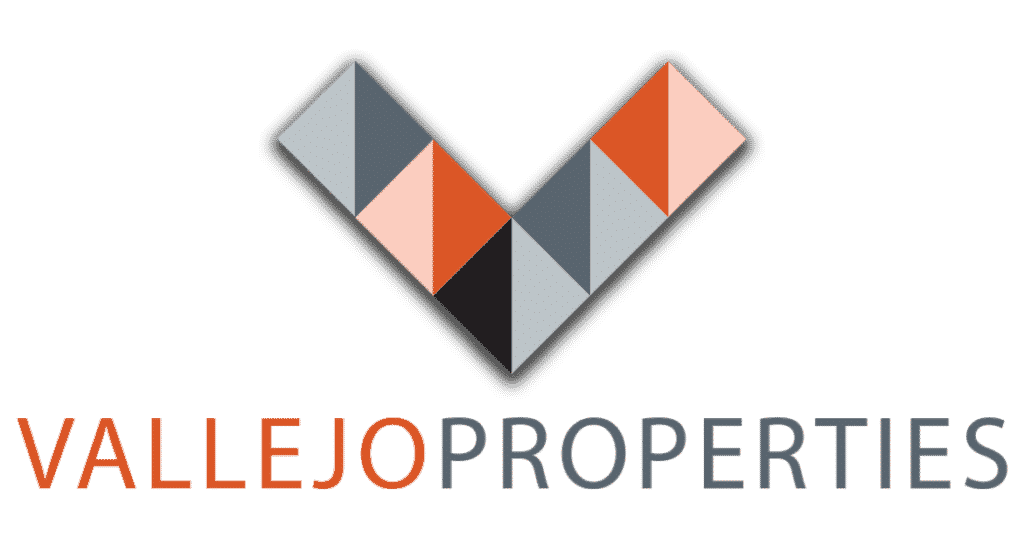The construction of industrial buildings had a growth of 3.39% in Mexico during 2019. The most important domestic markets during this period were concentrated in Mexico City, Tijuana and Monterrey. In general, this sector was one of the most dynamic in the country’s construction industry (1).
In Mexico, close to 22.3 million
of square meters of net rentable area (1).
▬
In particular, Mexico City has the largest amount of this type of project, with 544,513 m2 distributed in 22 new industrial buildings. With this figure, the CDMX reaches a total of almost 13 million square meters in this area.
This type of construction has great momentum in the most important cities of the country, as it is part of the economic activity of both property rental and the establishment of businesses and various industries in these spaces.
– What is an industrial building
– Types of industrial buildings
– By type of material used in the construction of the industrial building
– Industrial building with steel structure
– Precast concrete industrial building
– In-situ concrete industrial building
– By type of production in the industrial plant
– Pure production industrial building
– Industrial manufacturing building
– Maquiladora industrial building
– Difference with industrial warehouses
– Industrial building construction process
– Industrial warehouse rental areas
– Price of industrial buildings for rent
What is an industrial warehouse
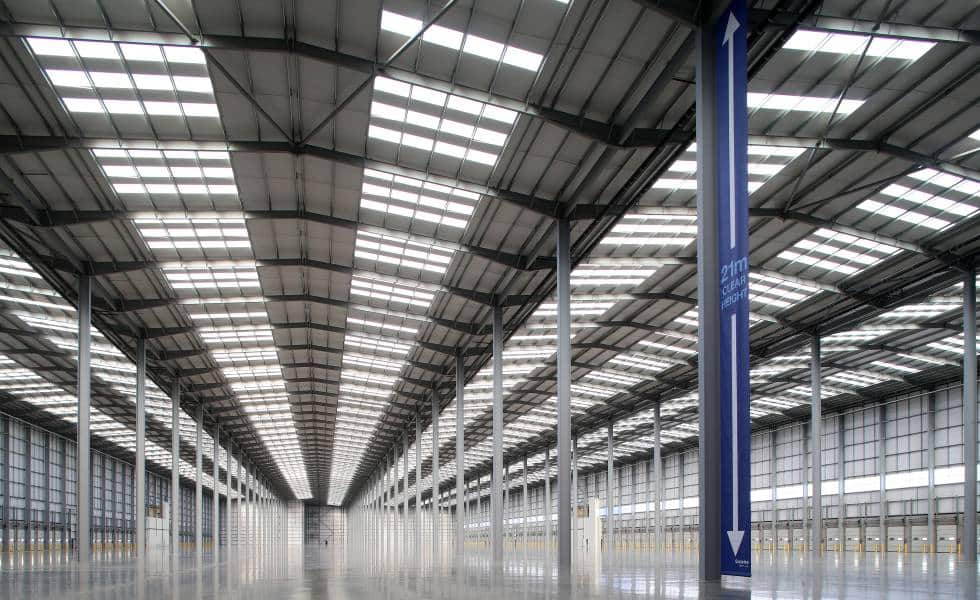
The industrial building is the general housing of all the assets of a company, including offices, machinery storage, production area, workers’ area, and storage of products or raw materials.
Industrial buildings can be built prior to the installation of the business or be the result of an investment for a specific line of business. In the second case, the investment allows construction to begin with technical specifications for the machinery and operations to be carried out at the site, taking into account the relevant safety and civil protection regulations.
If you are interested in commercial premises, we recommend you to read our article:
“Rent of commercial premises in CDMX: costs and benefits”.
Types of industrial building
At this point it is very important that you take into account the type of business you want to set up in an industrial building. This choice may be a little more complex than the choice of warehouses for rent because you must consider the need to have space not only for storage, but also for the production and operation of your business (2).
In this sense, we can identify two classifications of industrial buildings: one, by type of material, and two, by production sector.
By type of material in the construction of the industrial warehouse
It is important to consider this category because it allows you to know the structural objectives with which the ship is designed and to what extent it enables and strengthens your business, depending on your line of business.
Industrial warehouse with steel structure
Buildings made with this material tend to develop a very strong base in the structure, and are characterized by not having pillars within the site, which allows a continuous distribution of furniture, inventory and machinery (2). This type of
cellar
offers enough space for the accommodation and visibility of the entire ship.
One of its advantages is its lightweight construction, due to the type of material. It is used in buildings whose prognosis is for growth or where, at least, large load changes will take place, in addition to having free spaces (2). Not recommended in marine atmospheres or laboratories with chemical handling (2).
Precast concrete industrial warehouse
The construction of this type of vessel is done in advance. The material allows you to create great resistance to fire, so if your product is flammable you can consider this type of industrial building as an option, but do not forget to rely on strict safety guidelines and measures.
You should also take into account that this type of construction is very heavy, so it is not possible to lift it very high, so its vertical growth will be limited and, if it is located between large buildings, it will be difficult for natural light to enter (2).
On-site concrete industrial warehouse
This type of building differs from the previous one because the construction method is different, since all the mixing, pouring, setting and curing processes are carried out in the same place. In this sense, there is more freedom to prepare the building, as it is no longer governed by prefabricated blocks (2), which may or may not meet your guidelines.
For this type of building it is important to have specialized advice in the creation of the construction model so that it is functional and aesthetic at the same time.
Mixed industrial warehouse
This type, as its name indicates, combines characteristics of concrete and steel, thus providing advantages of each of the construction materials. This type of building improves the performance of the structure by creating different dimensions and divisions within the same space, so if your business needs more resistance or amplitude, you can have it without being forced to decide for one or the other (2).
As you can see, the type of material is fundamental when deciding, since it is not only a question of aesthetics or technical curiosity, but also of the functionality that each one provides.
By type of production in the industrial warehouse
There are four categories that are classified as part of the catalog of industrial investments, where the production purpose of the industrial building is taken into account , i.e., what it was made for.
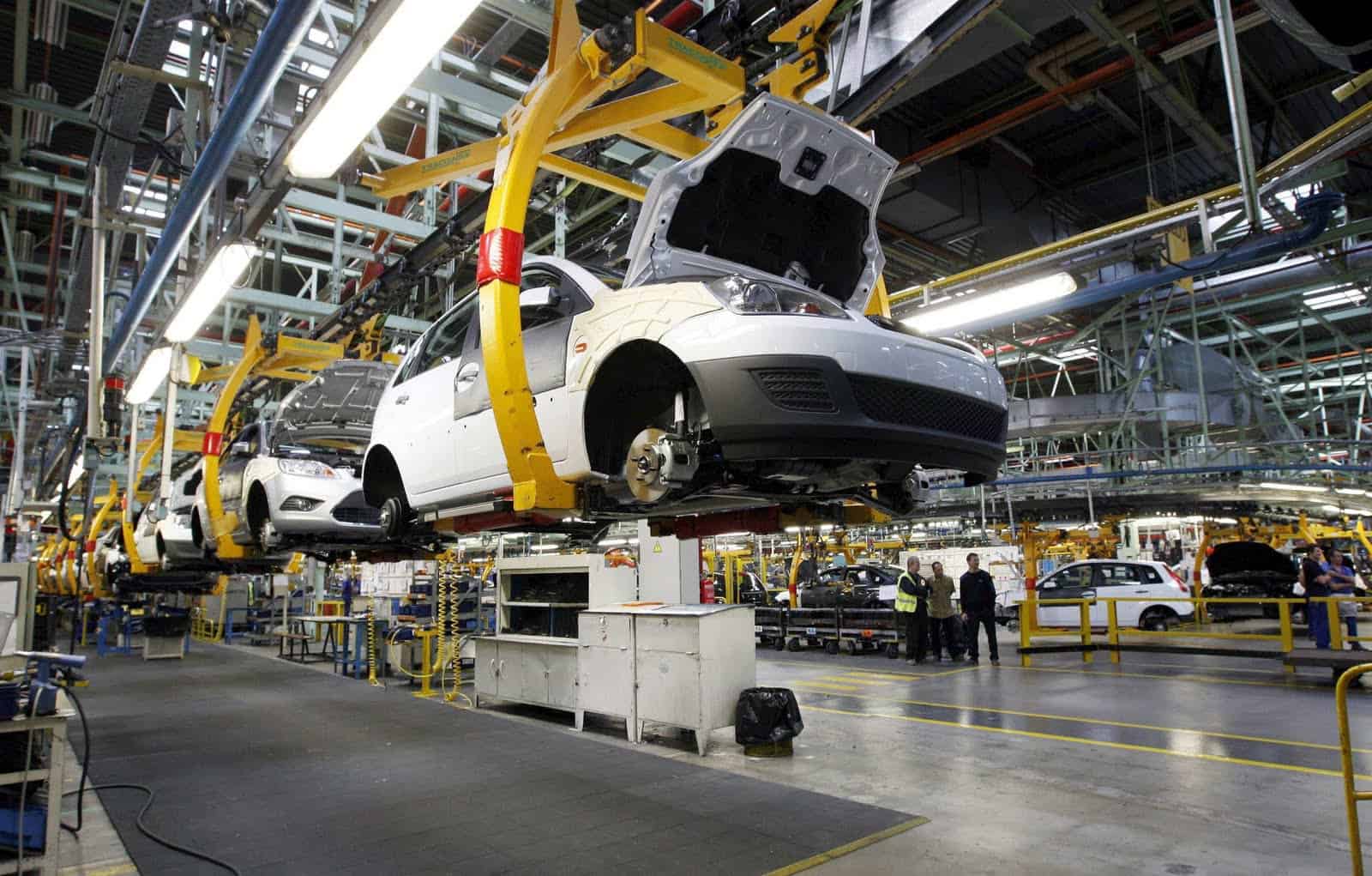
Industrial warehouse of pure production
This ship is dedicated to taking inputs and transforming them into a finished product. They normally occupy large extensions of land (on average 400 hectares), due to the intricate nature of the process they carry out. Companies with this type of ship are usually large for their respective industries, such as Toyota or Purina (3).
Industrial manufacturing warehouse
This type is one of the most important due to the economic importance of its operation. They are suppliers to production plants because they are dedicated to creating parts and components for a wide range of industries. They occupy spaces of between 15,000 and 20,000 square meters, and require more personnel to operate the production line. An example would be the warehouses where parts for automobiles are manufactured; a very active sector (3).
Maquiladora industrial warehouse
This space stands out for carrying out simple processes or product treatment. Central to this ship are the people who work in the production of these items (3). Large spaces and plenty of lighting are required for this type of plant because the work often requires constant detail and production.
Mixed industrial warehouse
This building combines research, production and office work. The sizes of this type are usually smaller than the rest (from 2,000 to 3,000 square meters), despite integrating several functions (3). They require other types of sections, such as parking lots, because they tend to receive more people in the warehouse, both employees and customers.
Difference with industrial warehouses
Although the two terms are often used synonymously, in reality, the industrial warehouse is an area that is part of the industrial building, and in turn, several industrial buildings make up an industrial park.
It is important to clarify this difference, especially so that you can define what you need in each case, in order to rent a space according to your needs: if your needs are for storage, you can choose an industrial warehouse, or even simply an industrial warehouse. wineryIf you require an integral space for production, offices, administration and operation, the industrial building is your option.
If you need to know more about industrial warehouses for rent, check out our article:
“Industrial warehouses: characteristics, areas and recommendations”.
Construction process of an industrial warehouse
It is important to consider the building process, as it is essential to guarantee the safety and structural quality of your business. In general, regardless of the material, it is carried out as follows (4) (5):
- Clearing of the site. Basically, it is a matter of conditioning the land by examining the nature and possibilities of the soil, in a specialized study of the characteristics of the site.
- Foundations. This step depends on the type of building to be constructed, since these foundations will carry all the weight of the structure, through the footings and bracing. Concrete or concrete and steel can be placed on this base for added strength.
- Structure. In this part, steel beams are used to form the “skeleton” of the construction. It also depends on the type of surface and the use to which it will be put to create specific construction profiles (depending on the type of vessel, length and weight to be loaded).
- Enclosure. In this phase, the walls are placed, which can be made of concrete, corrugated sheets or panels, as required. Spaces for access and windows should also be provided.
- Cover. Covering can be done in several ways: with simple metal roofing, panel, in situ or deck type (including sheet metal, insulation and foil). The thickness of the cover will depend on the purpose of the cover.
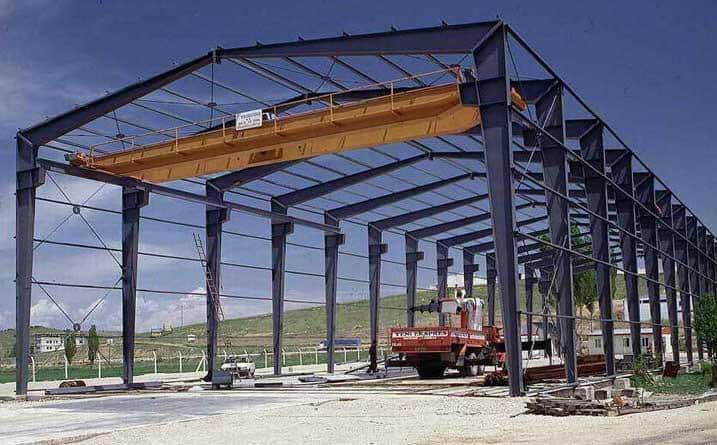
Industrial warehouse rental areas
On the Lamudi portal we found 1065 properties classified as industrial buildings in the CDMX, concentrated in 75 neighborhoods in 10 municipalities: Azcapotzalco, Gustavo A. Madero, Benito Juárez, Cuajimalpa de Morelos, Cuauhtémoc, Miguel Hidalgo, Tlalpan, Coyoacán, Iztapalapa and Álvaro Obregón (6).
The industrial zone of the CDMX belongs to the distribution sector in industrial parks, which include warehouses for companies such as Amazon, Mercado Libre, Walmart, among others (3).
▬
It is also important to consider the nine industrial corridors of the CDMX and the Metropolitan Area (7):
- Tlalnepantla.
- Toluca-Lerma.
- Iztapalapa-Tláhuac.
- Ecatepec-Xalostoc.
- Naucalpan.
- Vallejo-Azcapotzalco.
- Cuautitlán-Tultitlán-Tepotzotlán.
- Iztacalco.
- Teoloyucan-Zumpango-Huehuetoca-Tepeji del Río-Atitalaquia.
We will highlight two important corridors for industrial activity: Vallejo and Tultitlán . Vallejo is one of the most important industrial zones in the city and Tultitlán is located in the State of Mexico, in a zone of relevant industrialization.
Price of industrial buildings for rent
In the Industrial Vallejo area, we found that the average monthly rent is 28,300 pesos ( 8), while in Vallejo, on the Gustavo A. Madero side, it is approximately 19,500 pesos (9).
The price per square meter is approximately 129 pesos in the Industrial Vallejo zone (8), depending on the characteristics of the site.
▬
In Tultitlán, the price ranges from 40 to 120 pesos per square meter, depending on the specific zone or type of industrial building you choose. At Vallejo Properties we have four properties: three in Vallejo and one in Tultitlán.
The Audi, Endera and Stanhome complexes are located in Vallejo. In Tultitlán we have the Holophane plant. These buildings have the characteristics of warehouses and industrial buildings: loading and unloading ramp, platforms for units, controlled access, closed security circuits, spaces for maneuvering, no columns and good stacking heights, 24/7 security, parking, offices, restrooms, dining area, guardhouse, among other features.
If you want to know more details and quote with us, contact us and we will advise you to adapt the space to your needs.
If you are interested in offices for rent, we suggest you read:
“Offices for rent in CDMX: guide and recommendations”.
Tips for the use of industrial buildings
It is very important that you consider the industrial building as a work area where safety must prevail. It is advisable to automate, electrify, and make the equipment and work dynamics more sophisticated in order to reduce the level of risk to workers and equipment. In Vallejo Properties we care about your safety, so if you have any questions, you can contact us.
As you know, there are four elements involved in industrial incidents, depending on the type of business your business is in (10):
- Physical and environmental. Such as noise, vibration, velocity, pressure and radiation.
- Chemist. Handling of explosive, flammable, toxic or corrosive materials.
- Biological. Treatment of medicines, garbage, poison and bacteria.
- Psychological / Human: health condition, attention, training, age and fatigue.
In all these factors it is necessary to pay attention to reduce the danger in the treatment of materials, products or services of your business, in an industrial building. There are five fundamental points that you should take into account to prevent these situations (10):
- Training. This is fundamental, especially because this is the starting point for responsible prevention. You must use all the necessary tools and technologies to encourage good practices: the correct handling of products and equipment; the dissemination of production instructions, safety rules and preventive measures; and the development of safe habits, such as preventing people from working long shifts, using obsolete machinery or not having the necessary equipment to handle the products.
- Road safety. It is necessary to have a prevention plan for the use of heavy machinery in order to create a safe work environment. Loading is one of the most important activities carried out in the industrial building, but it is also the one in which most accidents occur, so it is necessary to have well-marked areas for road and pedestrian access, in addition to clearly indicating the areas of restriction within the building.
- Industrial safety with software. In almost all cases, it is not enough to have the latest technology to carry out certain operations or control activities through software, such as applications, so it is important that they are configured and operated correctly by specialists to avoid errors and accidents. It is also important to consider digital strategies inside and outside your business to boost its commercial growth. We recommend that you consult with a
digital marketing agency
specialized in the sector. - Safety in the industrial building. In general, it is very important to extend a culture of safety through good practices in each of the activities carried out. There must be organization, control, vigilance and tranquility to operate the technology correctly, under precise indications. In addition, we suggest that you have accident insurance to cover personnel and machinery, i.e., physical and property coverage, since this type of coverage also helps to make the area a functional zone.
- Measures against fires or natural phenomena. Specifically, it is important to have protection and insurance guidelines to back up your business in case of events that could affect the facilities where your work team is located.
He considers that there are penalties for those who do not properly comply with the safety environment required for construction and operation of this type. Therefore, you must have everything in order, both for the safety of your workers and for the protection of your finances.
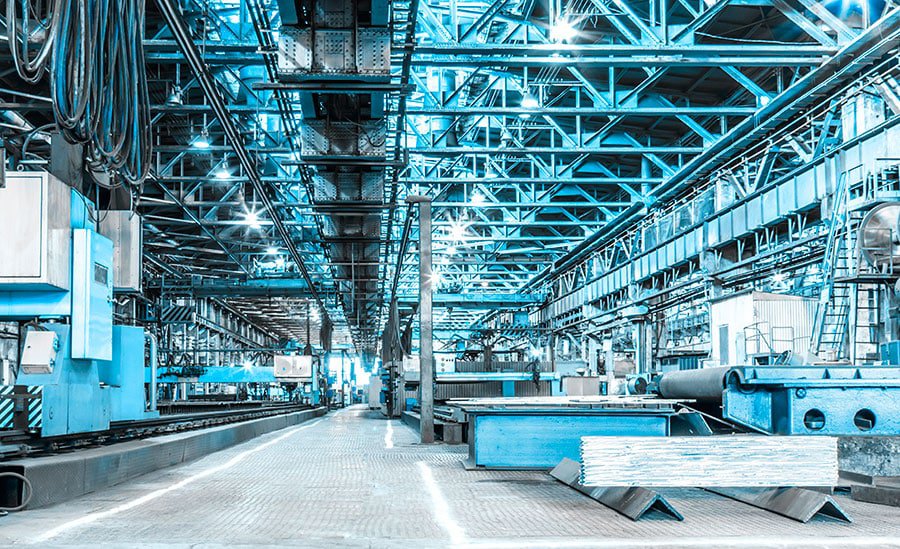
Figures to recap
Undoubtedly, industrial warehouses are a great reference point for investment. The central zone is one of the most important, where the CDMX, Toluca (State of Mexico), Puebla and Tlaxcala stand out with mixed assets, distribution, pure production and manufacturing plants, totaling 13.9 million square meters, representing 19.4% of the national total (3).
The cost of rent in this area is US$6.4 per square meter, or 138 Mexican pesos. Although it has a low unemployment rate of 3.5%, which makes the market more competitive, annual growth is 6.2% (3). Undoubtedly, this is a great opportunity, so count on Vallejo Properties to invest in the present of your business. Let’s find your ideal space.
References
- Fernando Navarrete. Construction of industrial buildings in Mexico grows 3%.. Urban Center, 2020. Accessed June 4, 2020.
- Flexpark. Types of industrial buildings. Flexpark, 2018. Accessed June 4, 2020.
- Arturo Vallejo. Guide to investing in industrial real estate. Expansion, 2019. Accessed June 5, 2020.
- ACH. The construction process of an industrial building, step by step. ACH Blog, 2017. Accessed June 5, 2020.
- Meprosa. What you need to know about industrial buildings and their construction. Meprosa, 2018. Accessed June 4, 2020.
- Lamudi. Industrial building in Distrito Federal. Lamudi, n/d. Accessed June 4, 2020.
- Urban Center. Class A industrial warehouses increase in Mexico City. Urban Center, 2014. Accessed June 5, 2020.
- Lamudi. Industrial building in Industrial Vallejo. Lamudi, s / f. Accessed June 4, 2020.
- Lamudi. Industrial building in Vallejo. Lamudi, s / f. Accessed June 4, 2020.
- Flexpark. Industrial buildings: 5 tips to prevent accidents. Flexpark, 2018. Accessed June 5, 2020.
